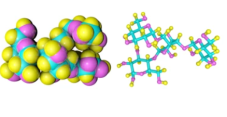
Molluscan meat tissues are high in protein and low in fat, in which polysaccharides exist in a form different from other aquatic organisms such as algae. The properties of molluscan polysaccharides combine the characteristics of aquatic resources and non-mammals, and their widespread presence is in the form of sulfated polysaccharides. Marine molluscan sulfated polysaccharides interact specifically with numerous proteins at the cell-extracellular matrix interface and influence fundamental biological processes by modulating protein function to achieve a range of biological activities such as anti-atherogenic, anti-coagulant, anti-inflammatory, antioxidant, and immunomodulatory functions.
Sulfated polysaccharides are structurally complex and highly diverse due to their high charge density, polydispersity, and numerous sulfation patterns, and are usually extracted using enzymatic digestion, hot acid, etc., separated and purified by size exclusion chromatography and ion exchange chromatography, and the pure polysaccharide structure is resolved by mass spectrometry and nuclear magnetic techniques. Compared with physical degradation, chemical degradation does not require complex equipment, and oligosaccharides with different degrees of polymerization can be obtained by controlling the conditions during the reaction, and it is the most used method for polysaccharide depolymerization because of its good reproducibility.
Top-down analysis is a direct structural analysis of large molecular weight polysaccharides without sample preparation. This method is used for polysaccharide chains with molecular weights around 10 kDa, and usually combines high-resolution and high-sensitivity mass spectrometry and NMR techniques to obtain information on the stereochemistry of glyoxylate residues and monosaccharide composition of intact sugar chains.
Bottom-up analysis is a fragment-to-whole structural analysis method that first degrades polysaccharides into oligosaccharides, separates them by chromatography and then combines them with high-resolution multilevel mass spectrometry to clarify their monosaccharide composition, molecular weight, number and type of substituents, and polysaccharide sequence information.
Lifeasible can perform extraction, purification, and molecular testing and analysis of molluscan sulfated polysaccharides, and our experts can provide you with the most suitable solution for your product and help you with your project development.
After mollusks are de-shelled and meat tissues such as organs, heads and feet are taken, lyophilized and ground as the main raw material for extraction. Degreased by acetone immersion, repeated 5~6 times and dried. NaOAc buffer was added to the sample powder, trypsin was added, and the system was fully dissolved, and the temperature of the system was increased and papain was added to the reaction. At the end of extraction, the enzyme was inactivated, centrifuged, and cetylpyridinium chloride (CPC) solution was added to the supernatant, left to stand, the supernatant was discarded, and the precipitate was completely dissolved in a mixture of NaCl and anhydrous ethanol, anhydrous ethanol was added to its final volume fraction of 40%, centrifuged, the combined precipitate was collected and dissolved in distilled water, dialyzed in 10 kDa fluid, and the sample was lyophilized to obtain molluscan sulfated crude polysaccharide. The sample was lyophilized to obtain molluscan sulfated crude polysaccharide. The yield of extraction was the ratio of the mass of dry material obtained to the dry weight of the defatted material.
The crude polysaccharide was completely dissolved in distilled water, passed through an anion exchange column, and eluted with distilled water and NaCl aqueous solution, respectively. Molluscan sulfated pure polysaccharide was obtained, dialyzed using dialysis bags to remove NaCl, and freeze-dried to obtain purified white sulfated polysaccharide powder for subsequent analysis.
The structure analysis and identification of polysaccharides were performed by high performance liquid chromatography-mass spectrometry (HPLC-MS).
If you are interested in our services, or if the service you want is not listed, please feel free to contact us, and we will get back to you as soon as possible.